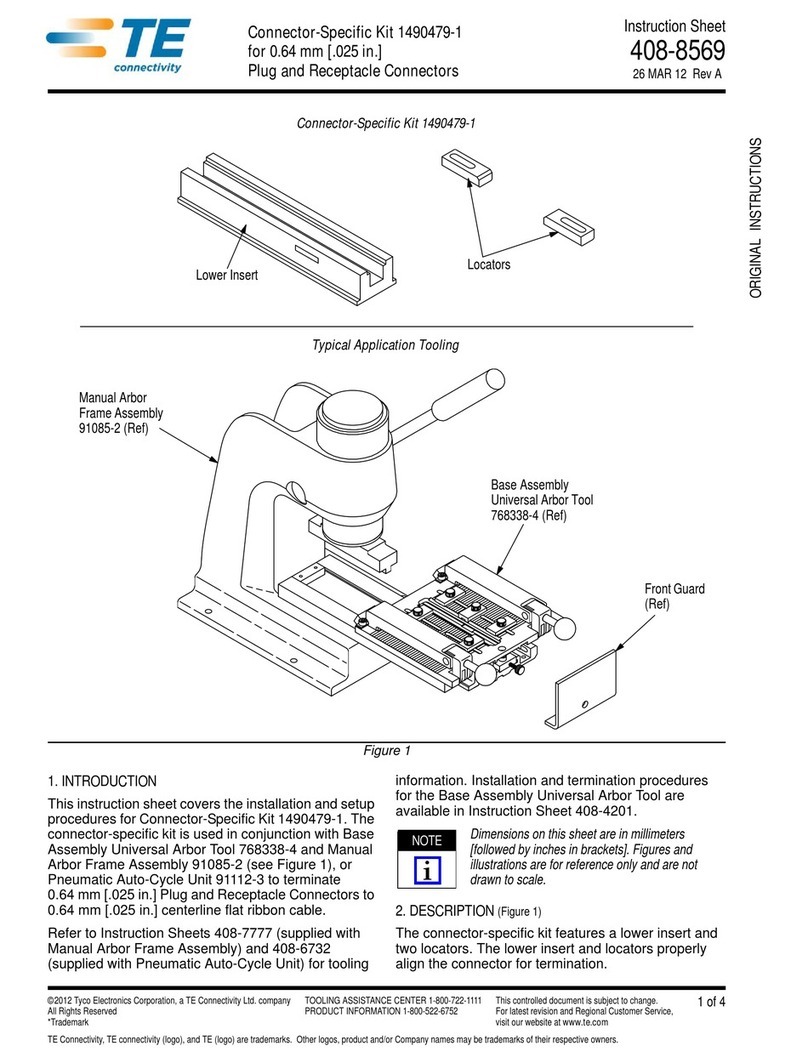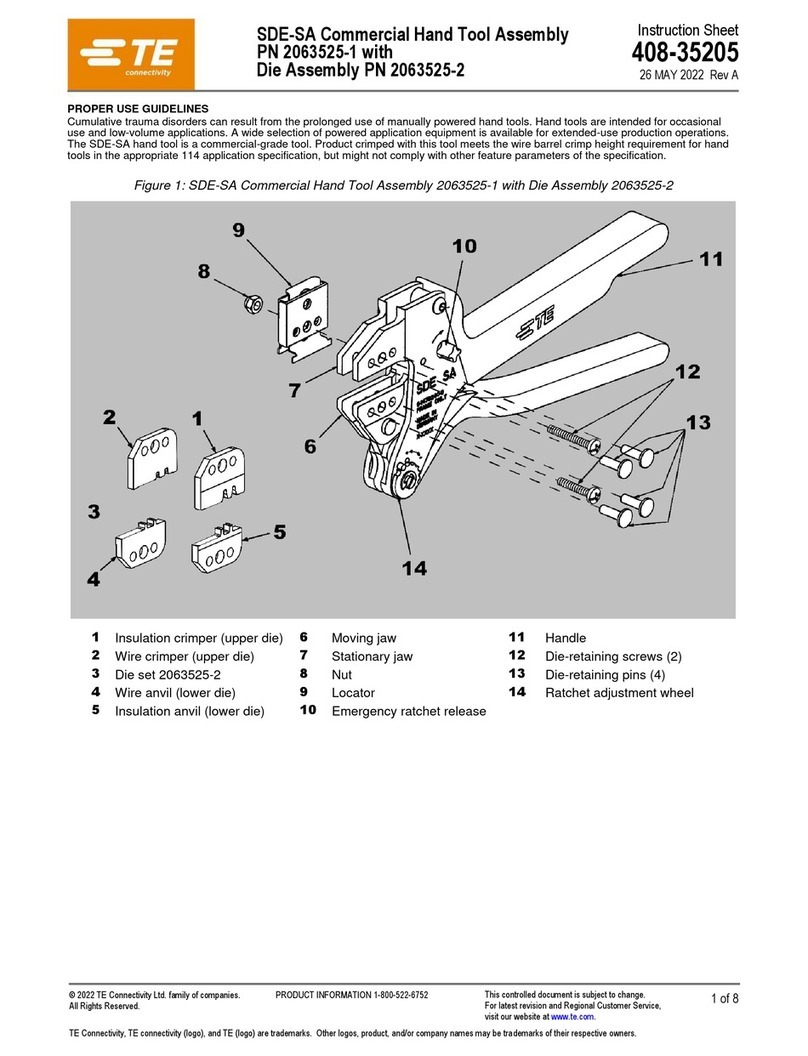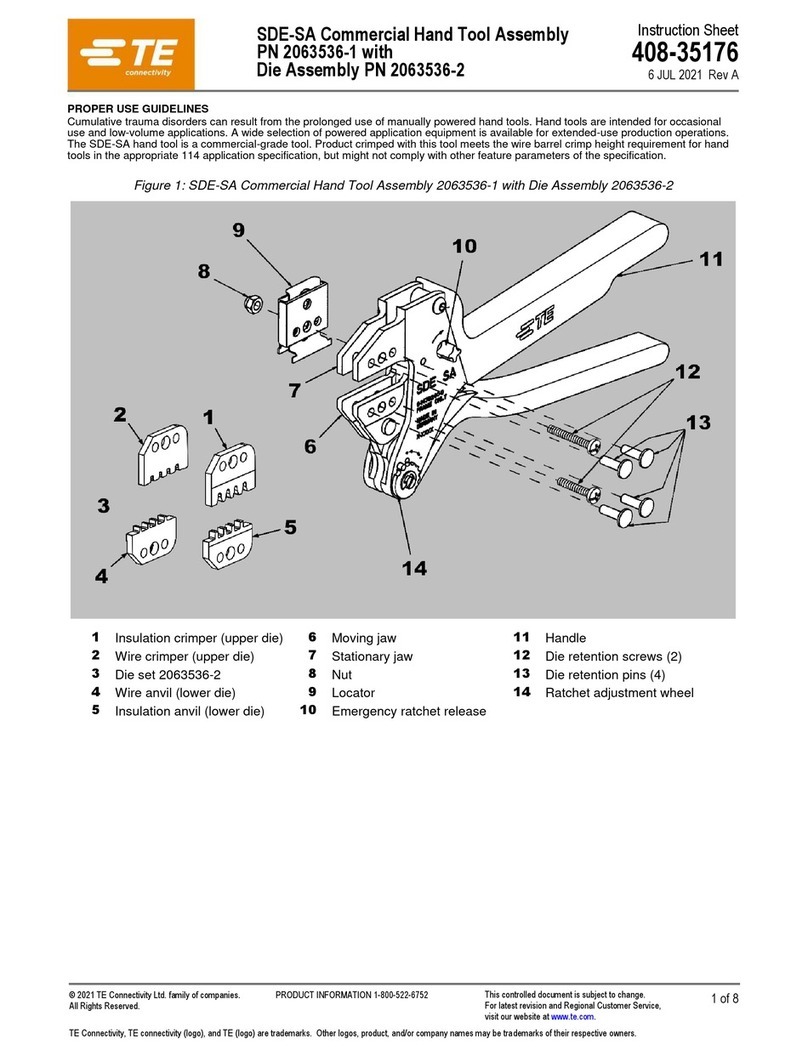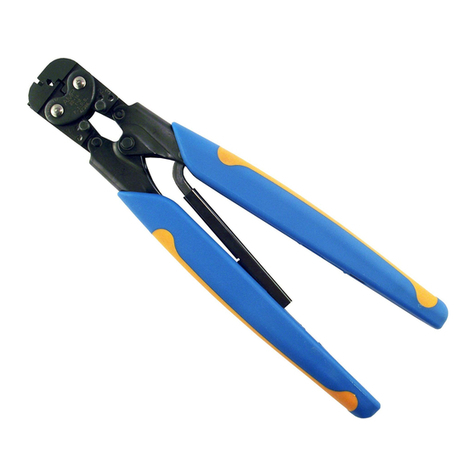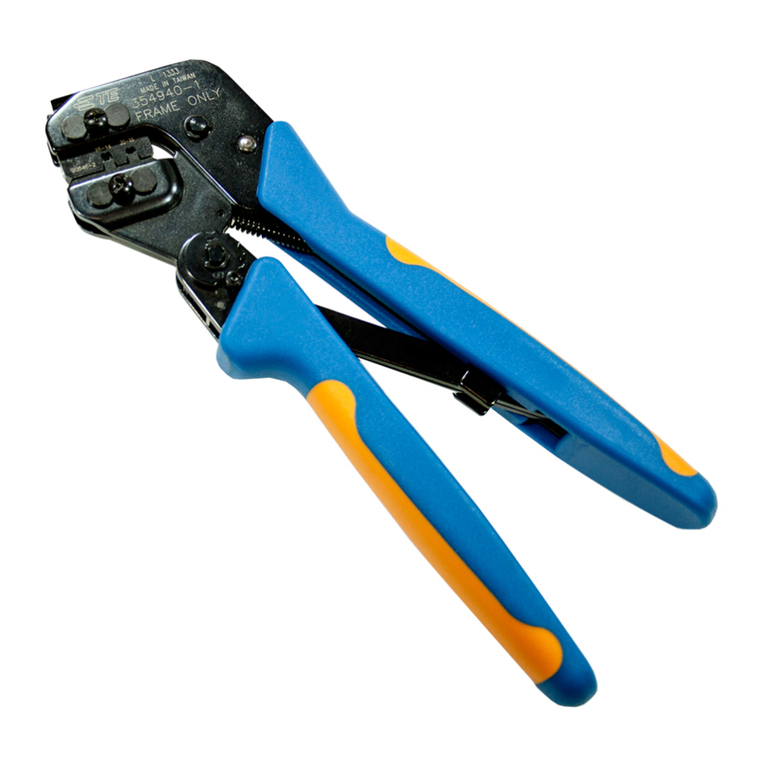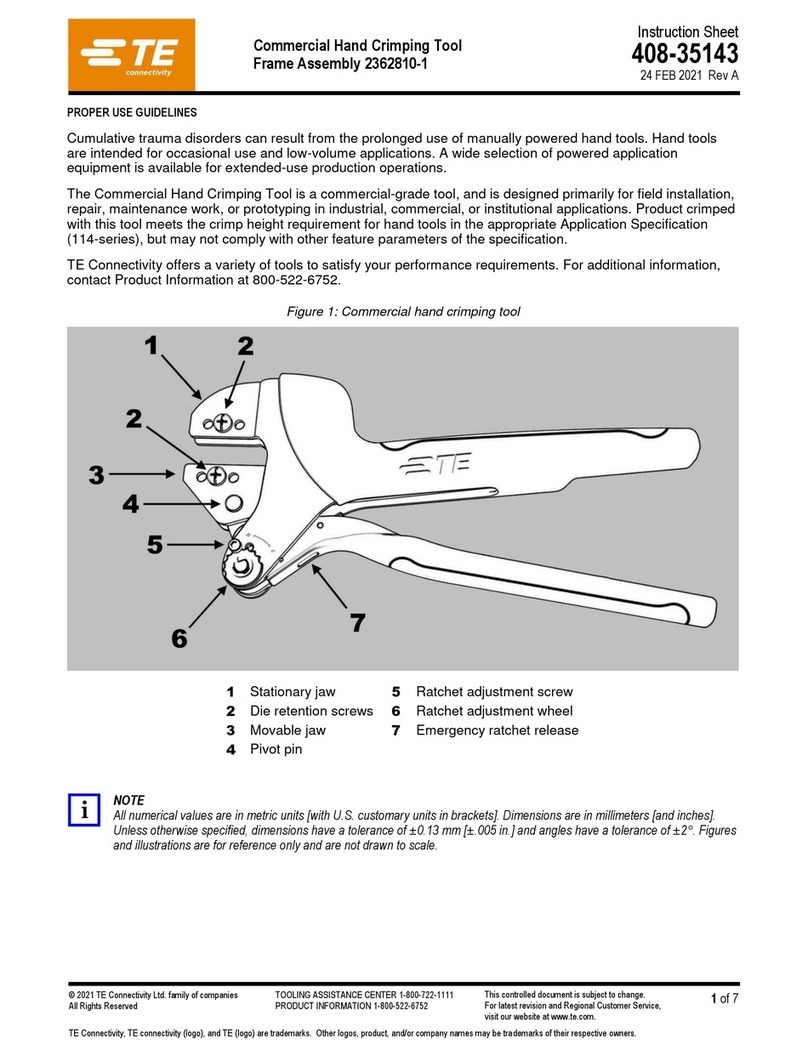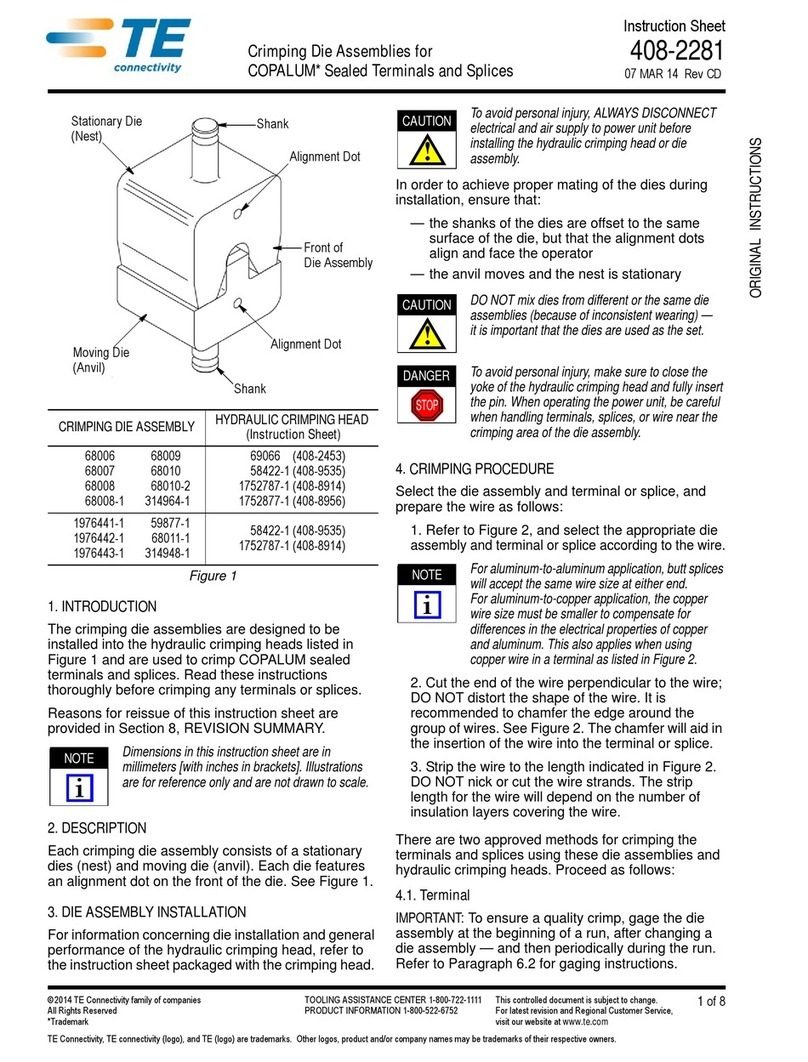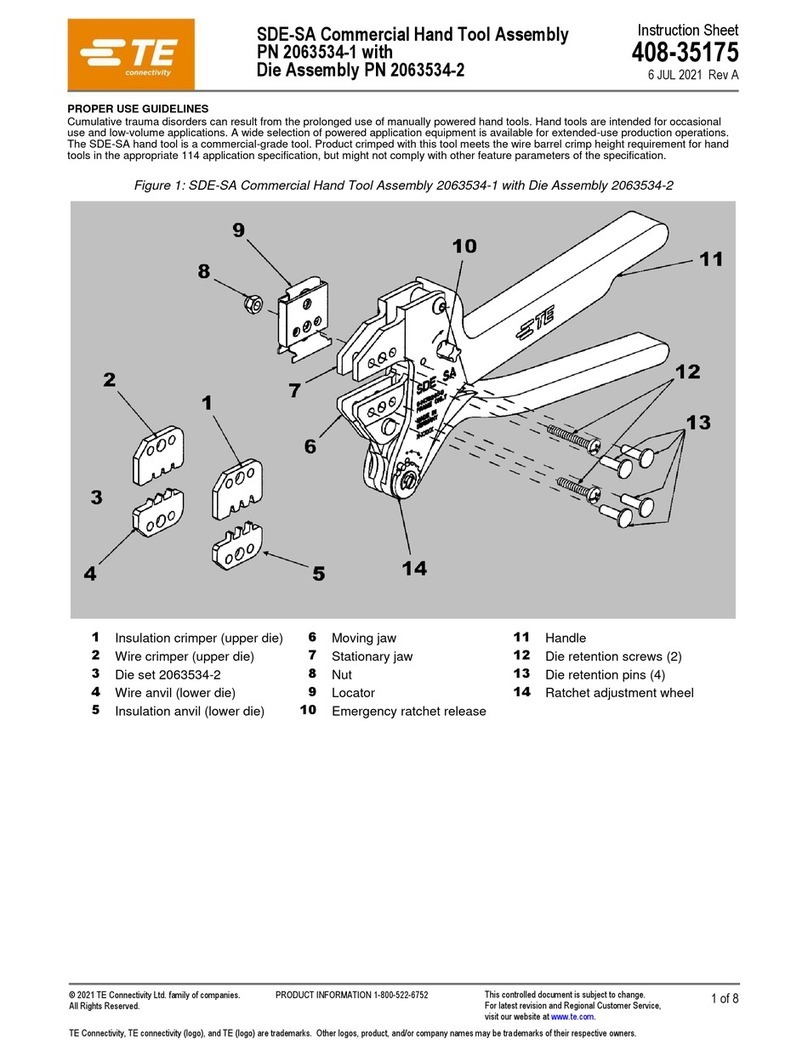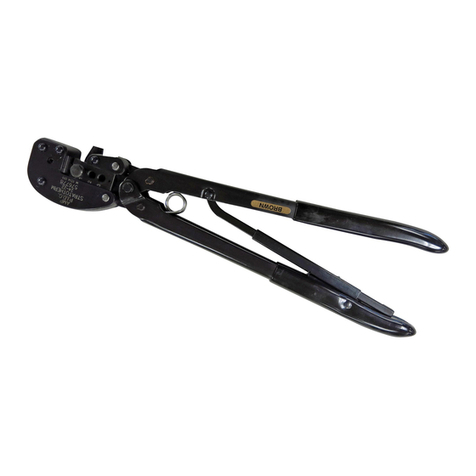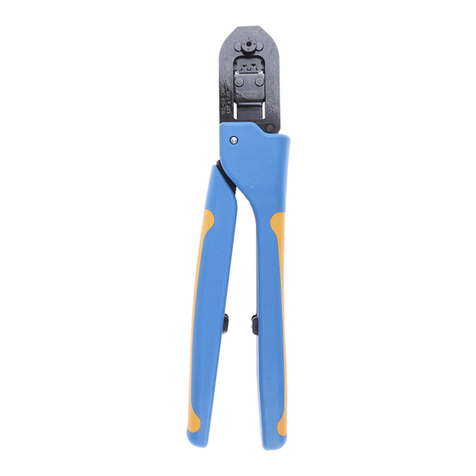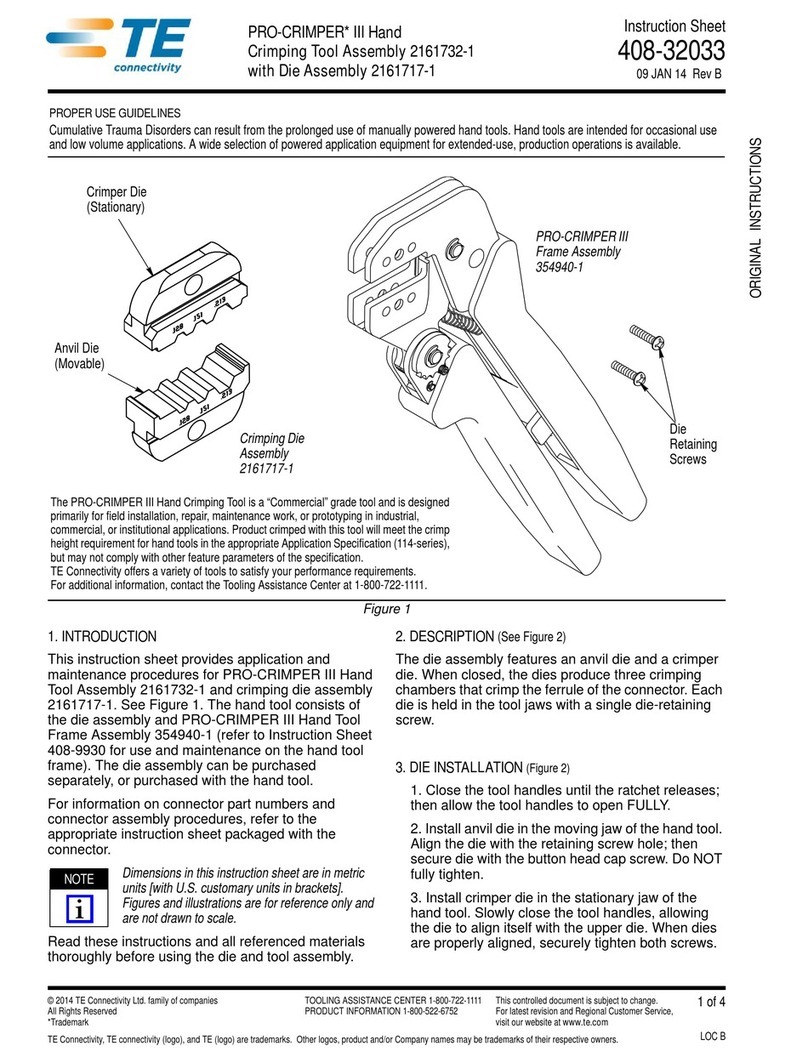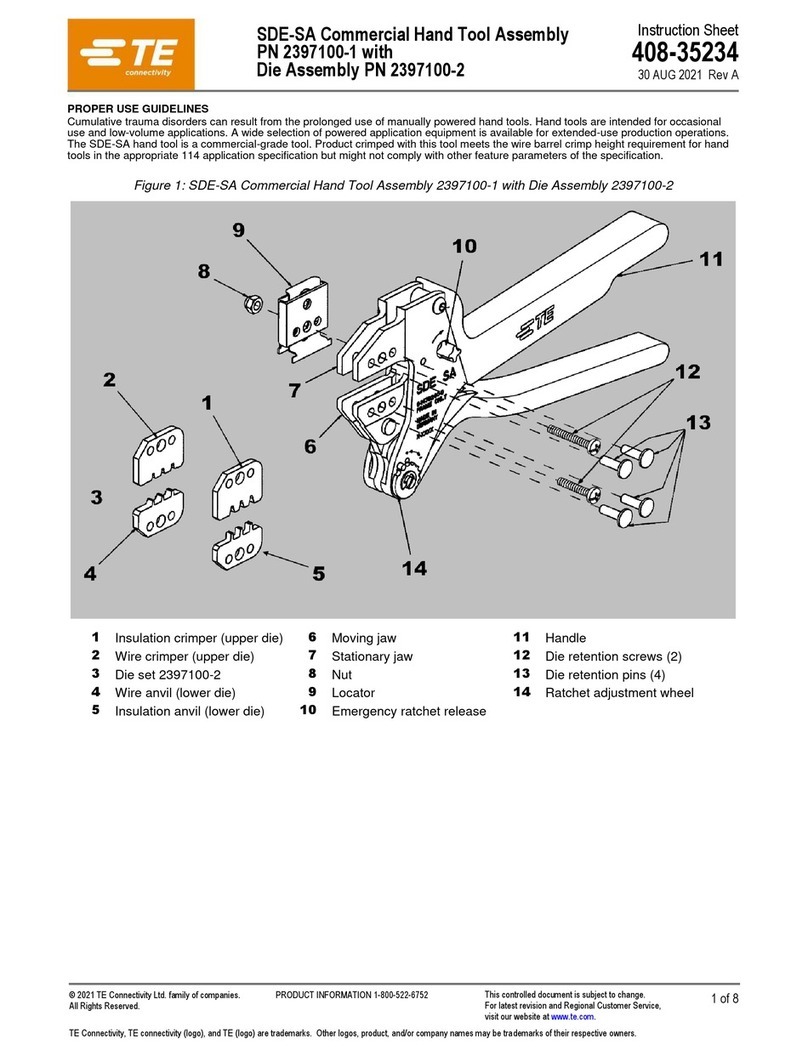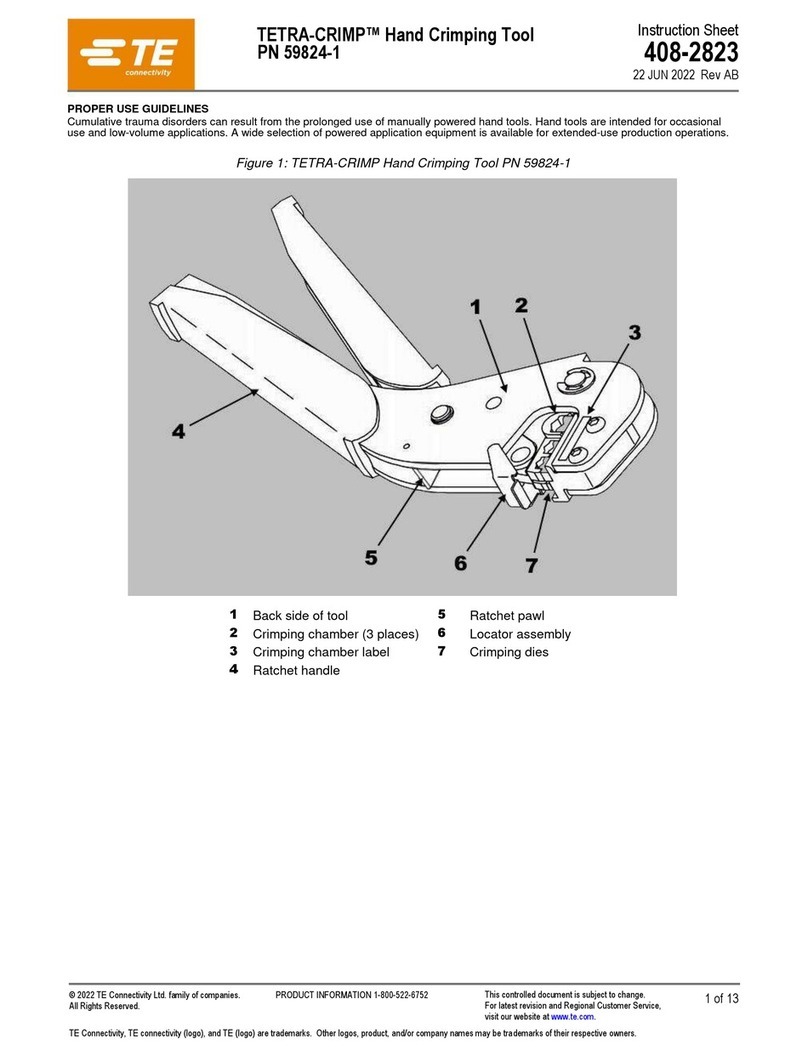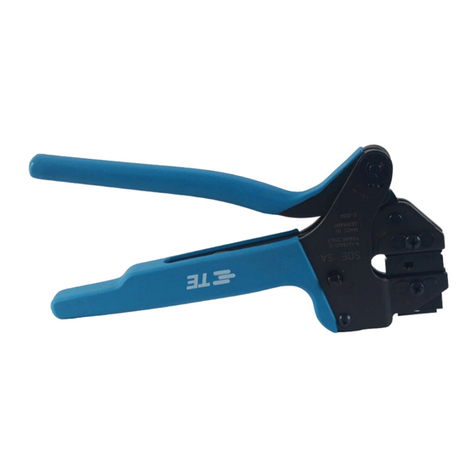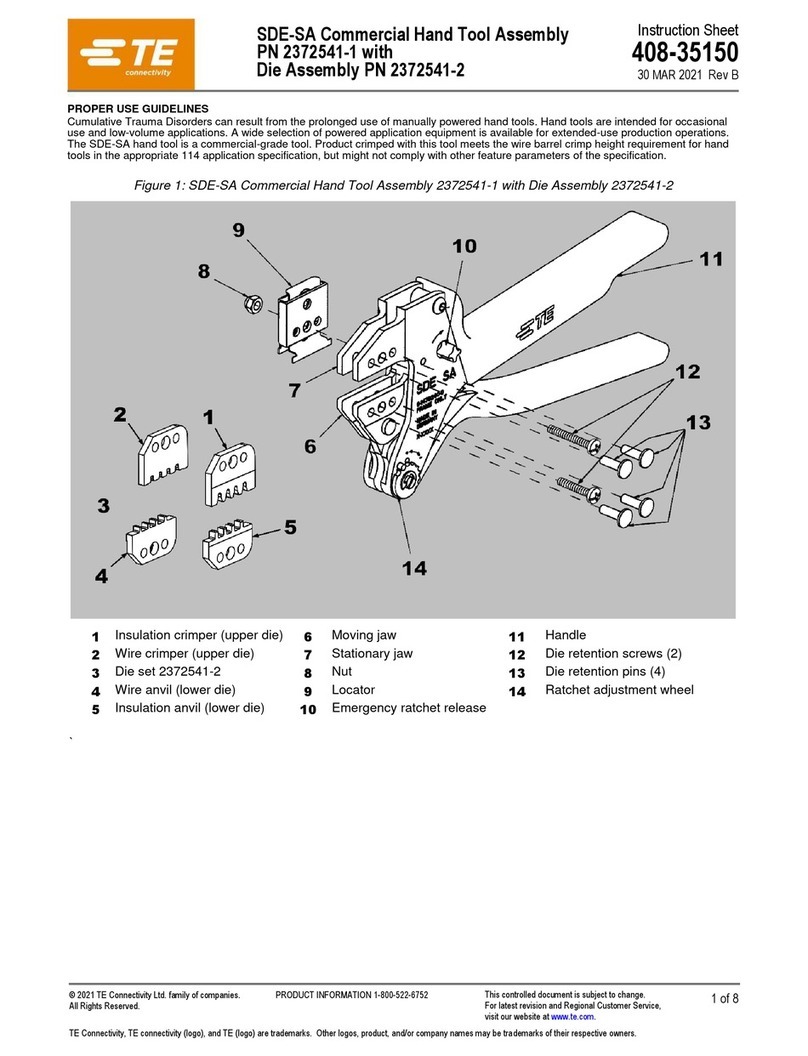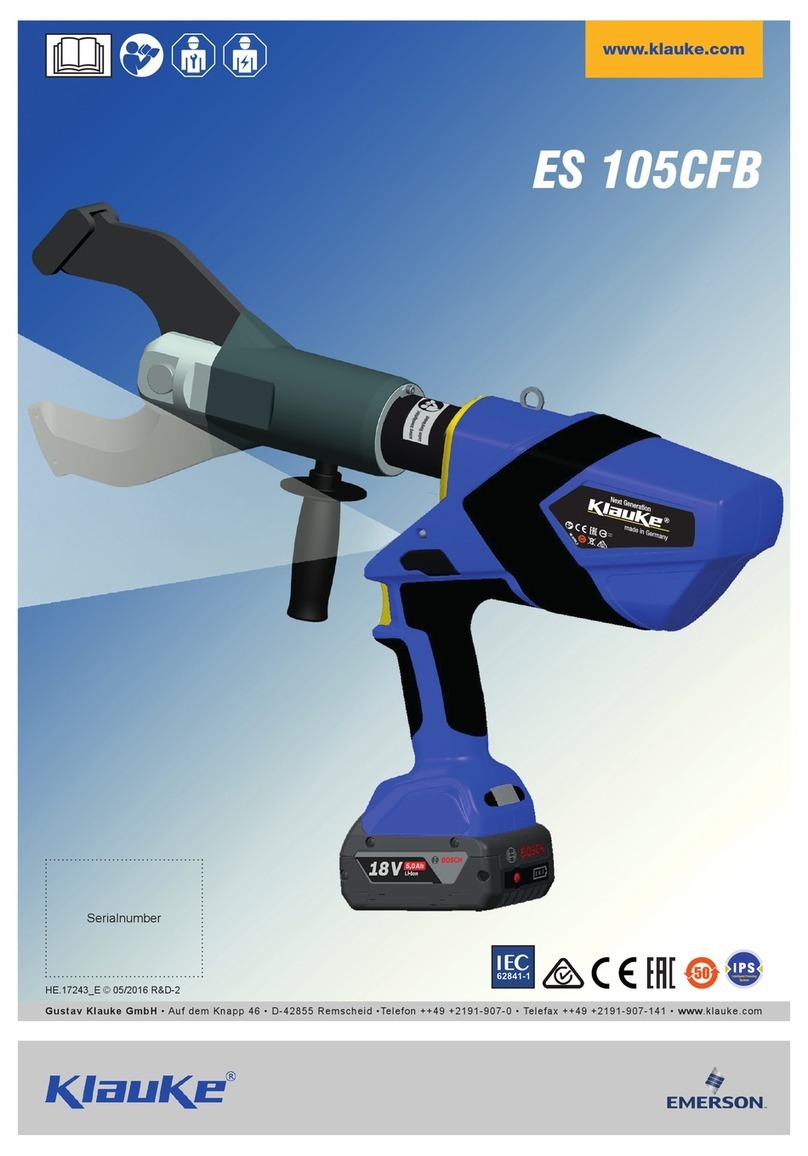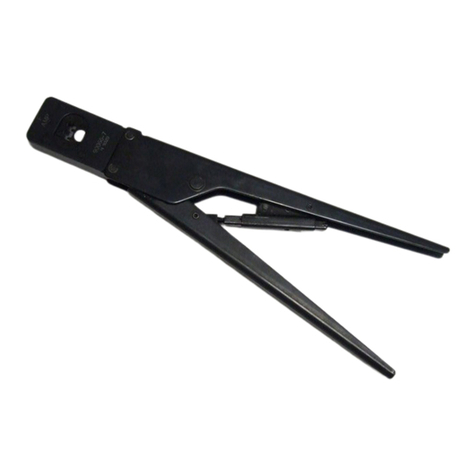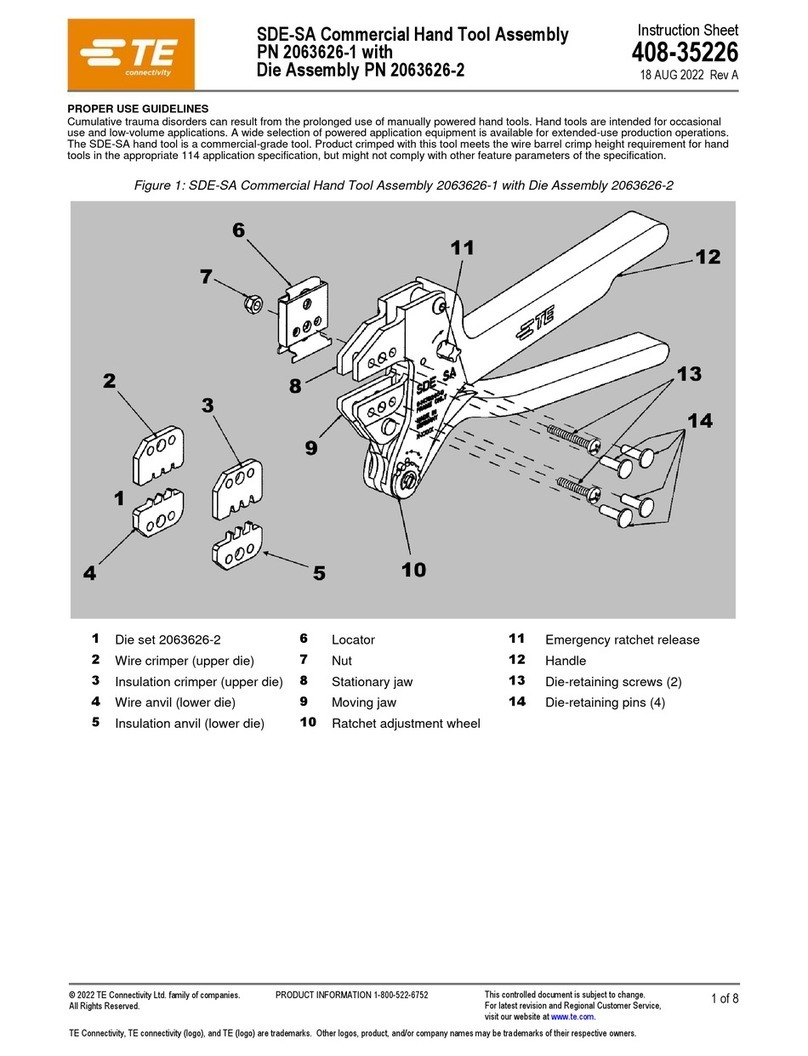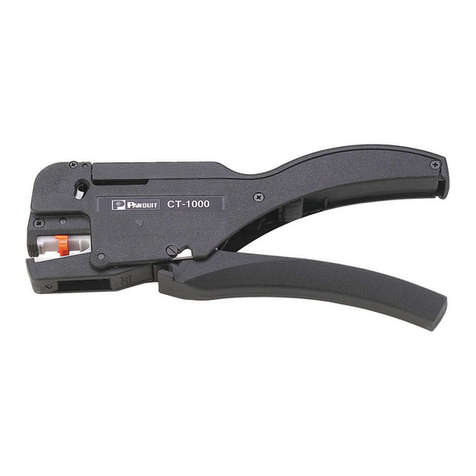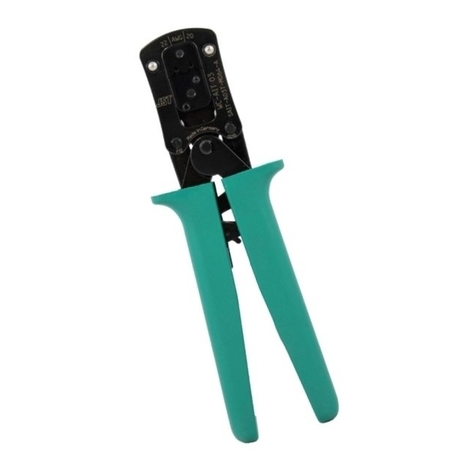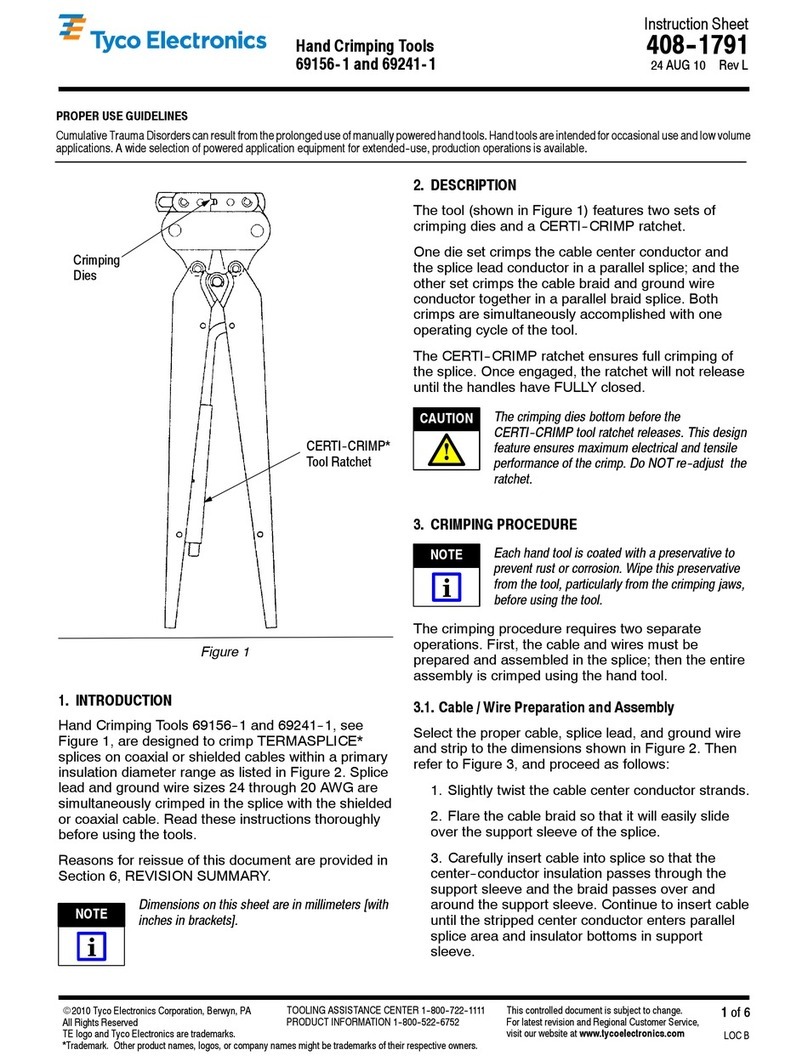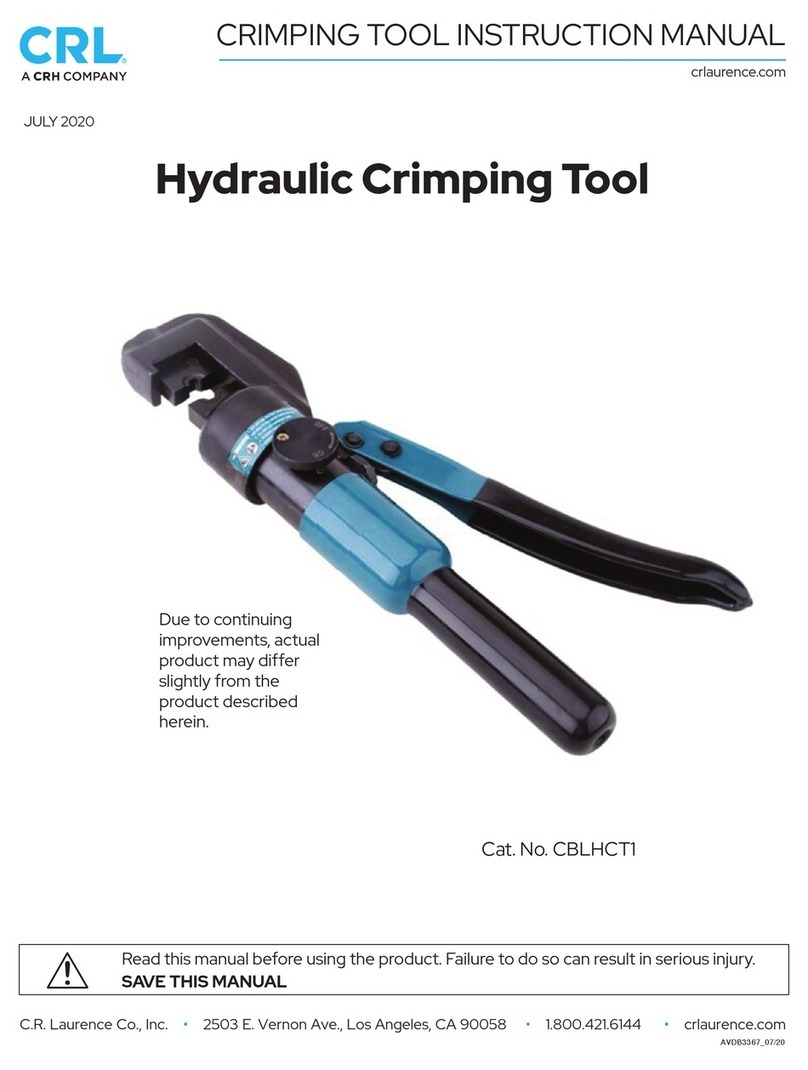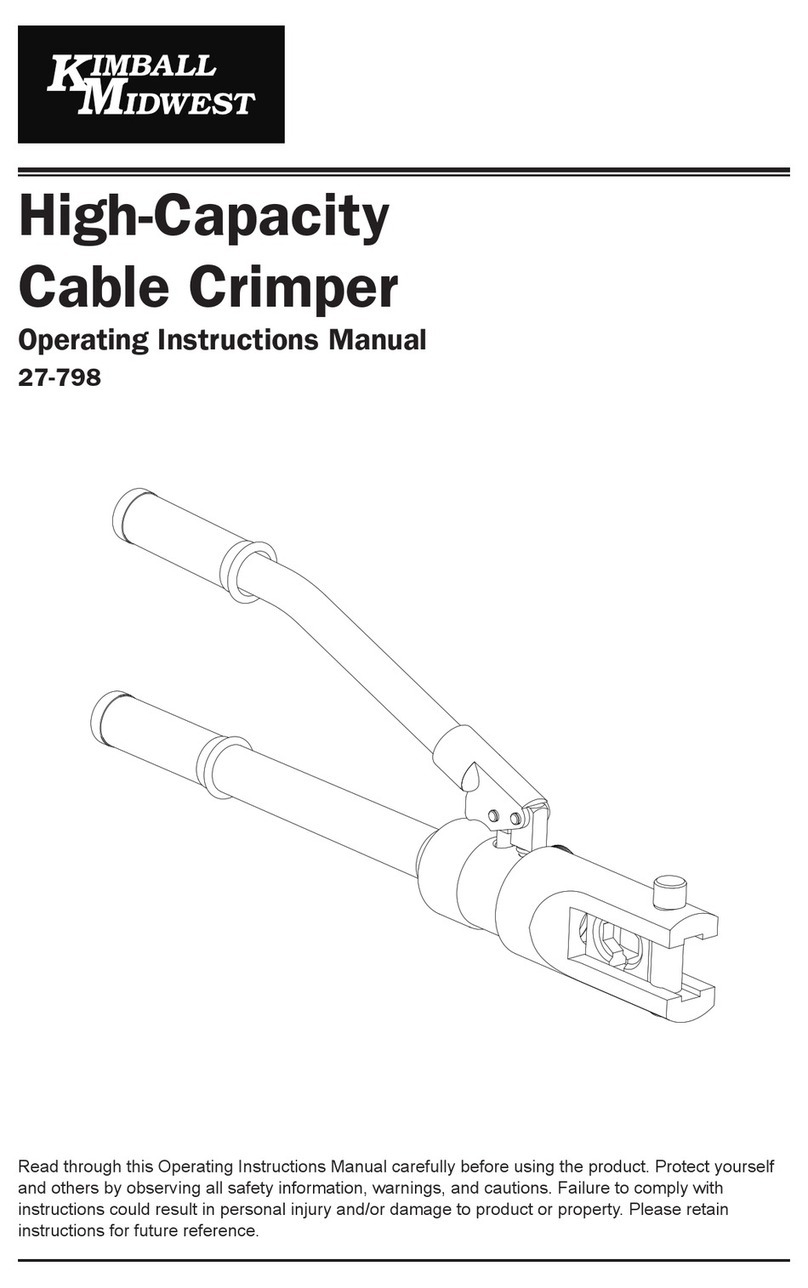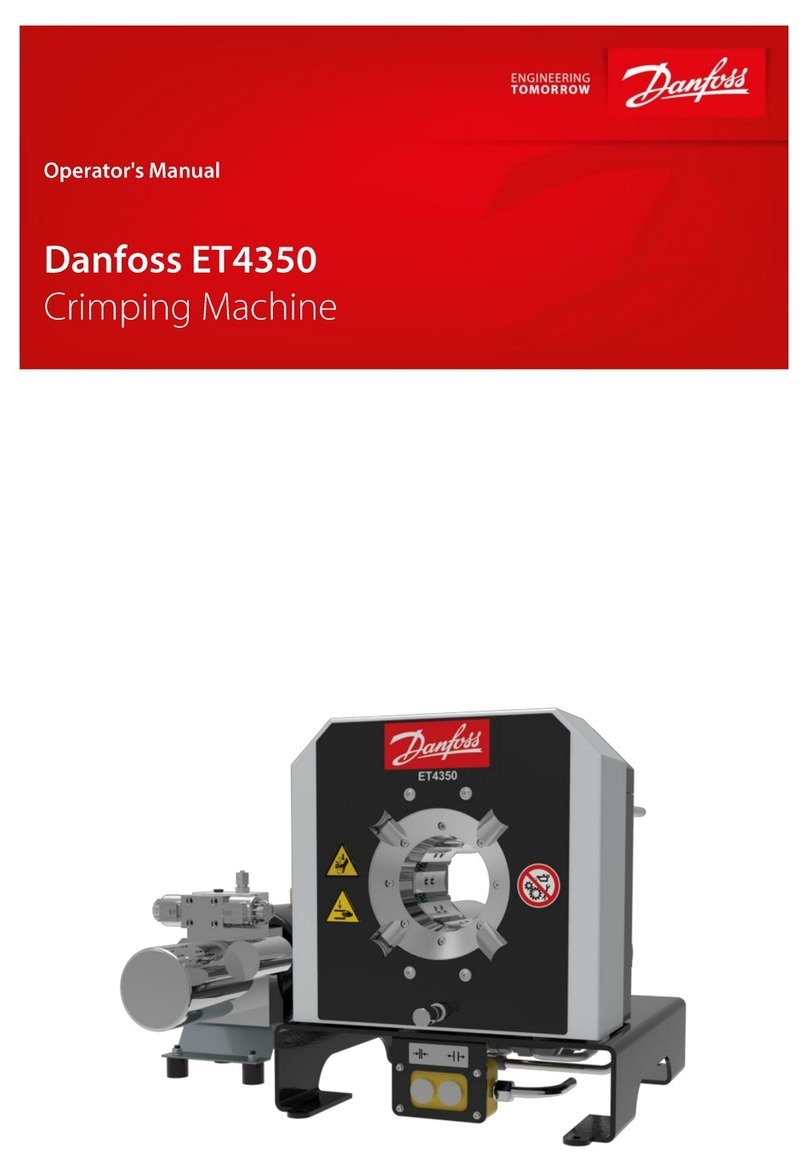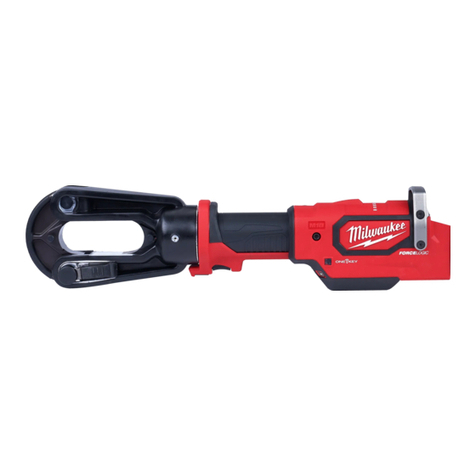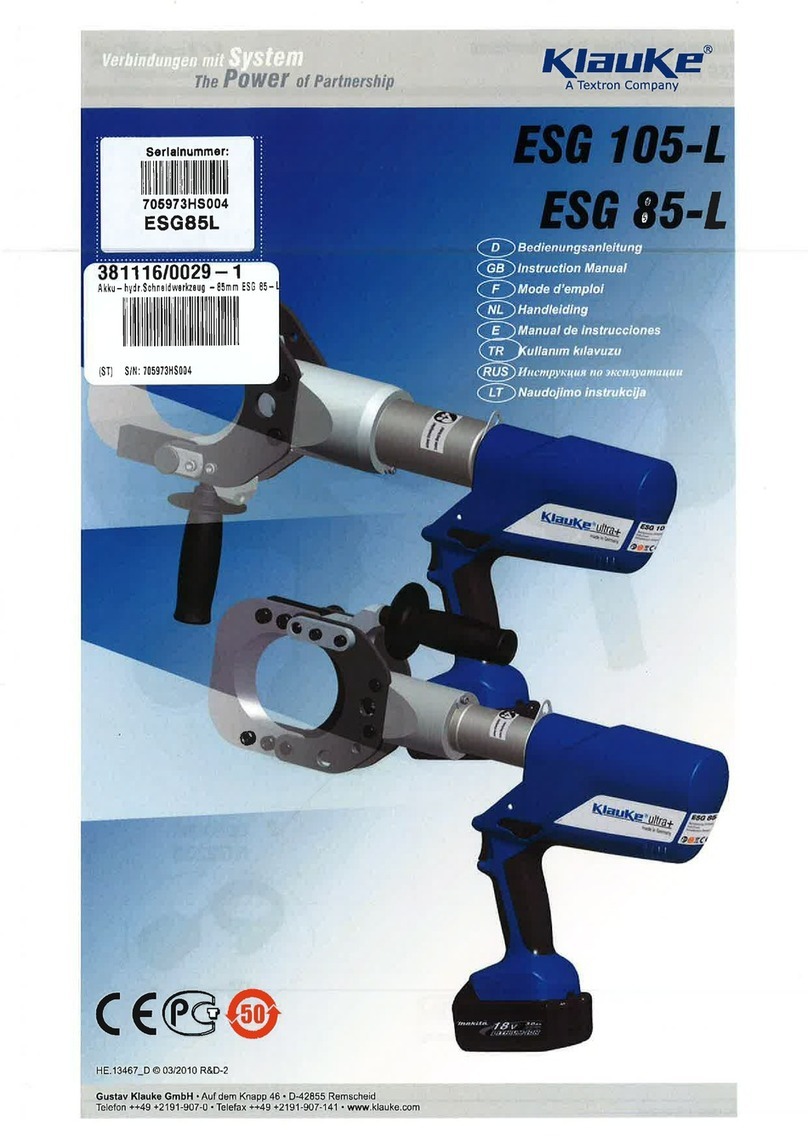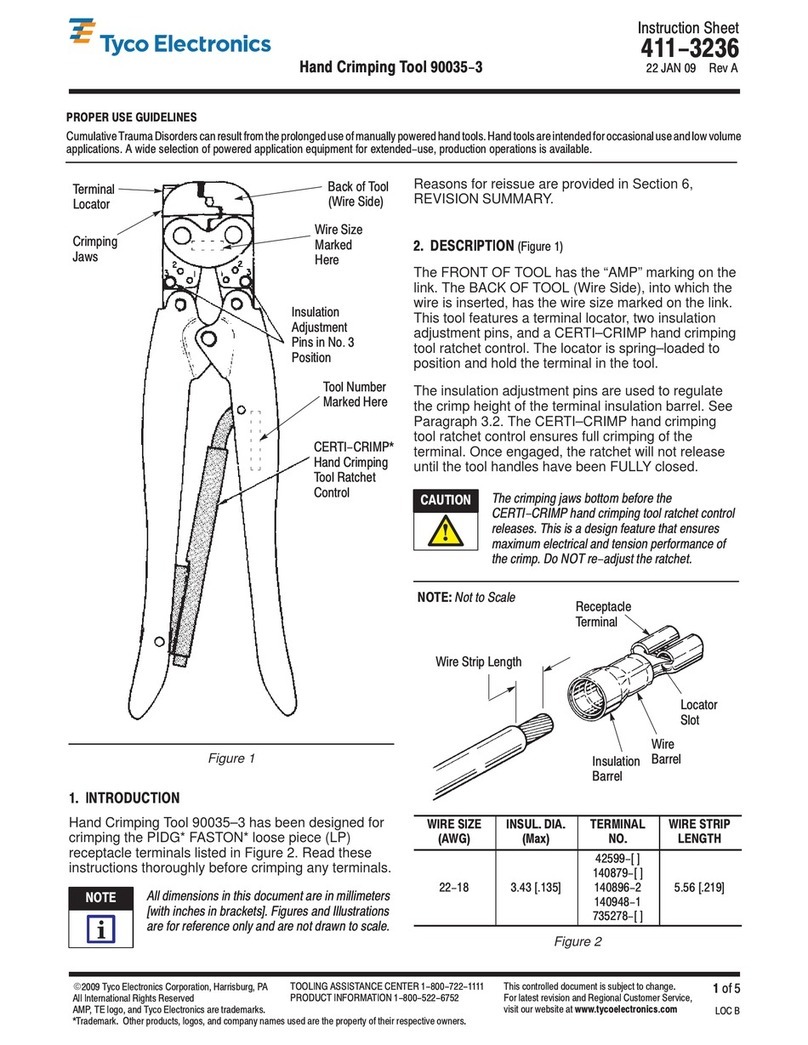
408-10032
3of 4
Rev B
4. Depress the trigger to advance the moving ram.
This closes the crimp jaws in order to hold the
terminal in place. DO NOT deform the wire barrel.
5. Activate the tool to complete the crimp. The crimp
tool automatically returns to the first position of the
cycle when the crimp is complete. Remove the
splice from the head.
6. Refer to Section 5 and Figures 4 and 5 for crimp
inspection.
Damaged product should not be used. If a
damagedspliceisevident, itshouldbecut from the
wire and replaced. Do NOT re-terminate splices.
5. MAINTENANCE AND INSPECTION
To avoid personal injury, ALWAYS disconnect the
battery from the tool before performing
maintenance or inspection.
TE recommends that a maintenance and inspection
program be performed periodically to ensure
dependable and uniform terminations. The crimping
head should be inspected once a month. Frequency of
inspection should be adjusted to suit your
requirements through experience. Frequency of
inspection depends on:
•The care, amount of use, and handling of the
crimping head.
•The type and size of the product crimped.
•The degree of operator skill.
•The presence of abnormal amounts of dust and
dirt.
•Your own established standards.
Each crimping head is thoroughly inspected before
packaging. Since there is the possibility of crimping
head damage during shipment, new crimping heads
should be inspected immediately upon arrival at your
facility.
5.1. Daily Maintenance
TE recommends that each operator be responsible for
the following steps of daily maintenance:
1. Remove dust, moisture, and other contaminants
with a clean, soft brush, or a lint-free cloth. Do NOT
use objects that could damage the head.
2. Make sure that all pins, rings, and other
components are in place and secure.
To avoid personal injury and damage to the tool,
make sure quick pins are properly inserted.
3. Make certain all surfaces are protected with a thin
coat of any good SAE 20 motor oil. Do NOT oil
excessively.
4. When the head assembly is not in use, store it in
a clean dry, area.
5.2. Periodic Inspection
Regular inspections should be performed by quality
control personnel. A record of scheduled inspections
should remain with the crimping heads or be supplied
to supervisory personnel responsible for the crimping
heads. Though recommendations call for at least one
inspection a month, the frequency should be based on
amount of use, working conditions, operator training
and skill, and your established company policies.
These inspections should include a visual inspection
(Paragraph 5.3) and a crimping chamber inspection
(Paragraph 5.5).
5.3. Visual Inspection
1. Remove all lubrication and accumulated film by
immersing the crimping head in a suitable
commercial degreaser that will not affect paint or
plastic.
2. Make certain all components are in place. If
replacements are necessary, contact TE.
3. Check all bearing surfaces for wear. Replace
worn parts.
4. Inspect crimp areas for flattened, chipped, or
broken parts.
5.4. Lubrication
Lubricate all pins, pivot points, and bearing surfaces
with a high quality grease. TE recommends the use of
MOLYKOTE† grease, which is a commercially
available lubricant. Lubricate according to the
following schedule:
Head used in daily production - lubricate daily
Head used daily (occasional) - lubricate weekly
Head used weekly - lubricate monthly
Wipe excess grease from crimping head, particularly
from jaw closure areas. Grease transferred from jaw
closure area onto certain terminations may affect the
electrical characteristics of an application.
† MOLYKOTE is a trademark.
